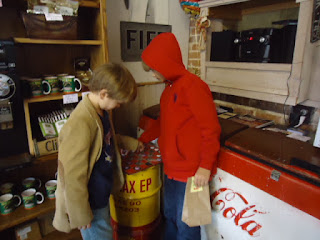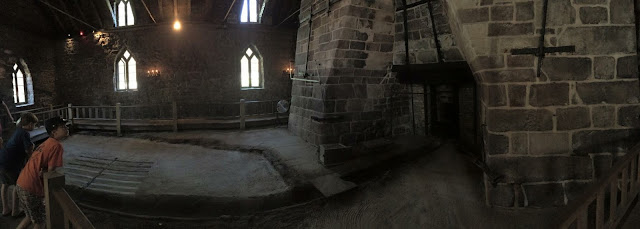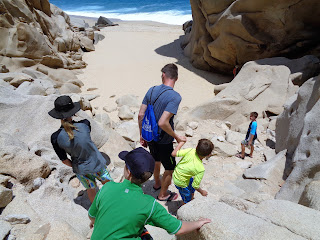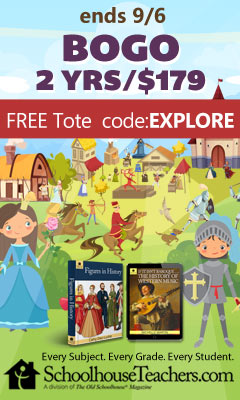One of our favorite family tv shows is the Andy Griffith show (along with Gilligan's Island, I Dream of Jeannie, George & Gracie, and I Love Lucy....who needs modern-day tv?).
Travelling near the town of Mt. Airy, North Carolina, the setting for the Andy Griffith show and the home of the man himself, we decided to take an afternoon visit.
We sprang for the Squad Car Tour, which isn't nearly as expensive as you'd think. And besides, this is something we've never seen anywhere else! It was a rainy day, so the car tour was preferable to walking anyway.
Our tour guide was hilarious, and knew a lot about both the show and the town. We saw the places that inspired the show, the home Andy grew up in, and the school he attended. We also saw many of his frequent haunts and learned about his journey from homeless kid to tv star.
As an actual friend of Andy's, our guide had insights and behind-the-scene anecdotes which added to our love of the show. For example....(this is one most folks know anyway), did you know that the actress who played Aunt Bea was really a cantankerous old woman who hated everyone on earth??? It's a testament to her acting abilities! LOL
The Squad Car Tour ended at the Mayberry Courthouse, where we also found the Darlin's rusty pick-up parked! Scroll down to listen to Andy play bluegrass with them...
Oh what a hoot it was when they decided to ring up the state office and see if being a 'sleepy mommy' was grounds for a sentencing! Turns out, it's good for five minutes in jail. You know, it wasn't so bad.....I even got a little nap out of it!
The tables quickly turned when I found them "gambling" over a games of checkers in the filling station! Now the oldest was in jail for 'betting' his candy corn that he could beat his little brother. Around the downtown area of Mayberry, you'll see familiar sites, such as Walker's Drug Store, complete with soda jerk. The Snappy Lunch makes a mean hot plate, and there are many fabulous antique stores to poke around in. However, none of them had the umbrella we desperately sought on this day...
We finished off the trip with a stop at Opie's Candy Store, where the boys each got to fill a brown bag with a half pound of penny candy. So many choices!! Each piece was carefully considered before making it into the bag, and then slowly savored over the next two weeks.
Character Ed Unit with Andy Griffith
- The Way Back to Mayberry : Lessons from a Simpler Time
- The Mayberry Bible Study DVD set
- The Andy Griffith Show (season 1)
- Lessons for the episodes from the Andy Griffith Show (free)
- Plan your own trip to Mayberry
- Modern-Day Manners

 This lesson accompanies episode 4 of the first season, but there are some for the complete series of the show. Old family tv shows are a great way to help reinforce character education without your children being the wiser. It sure beats most of the stuff on tv today!
This lesson accompanies episode 4 of the first season, but there are some for the complete series of the show. Old family tv shows are a great way to help reinforce character education without your children being the wiser. It sure beats most of the stuff on tv today!
Finding the Way Back to Mayberry - Lesson 4 - Opie and the Spoiled Kid
Introduction
Opie has become acquainted with a new boy in town named Arnold Winkler. Arnold is a spoiled brat who believes he can get away with anything. When Arnold discovers that Opie gets a mere quarter-a-week allowance and has to do chores to get it, he tells Opie that he’s being taken advantage of. Arnold doesn’t have to work for his allowance and believes that no kid should.
Opie has become acquainted with a new boy in town named Arnold Winkler. Arnold is a spoiled brat who believes he can get away with anything. When Arnold discovers that Opie gets a mere quarter-a-week allowance and has to do chores to get it, he tells Opie that he’s being taken advantage of. Arnold doesn’t have to work for his allowance and believes that no kid should.
 Opie decides to quietly demand that his father raise his allowance to 75 cents (the amount Arnold gets), and he says he should not have to do any chores. Opie is obviously uncomfortable making these demands, and he takes it well when Andy refuses to comply. Arnold tells Opie that "man to man" talks always fail. He advises Opie that throwing a temper tantrum will get him whatever he wishes. Arnold says it always works...
Opie decides to quietly demand that his father raise his allowance to 75 cents (the amount Arnold gets), and he says he should not have to do any chores. Opie is obviously uncomfortable making these demands, and he takes it well when Andy refuses to comply. Arnold tells Opie that "man to man" talks always fail. He advises Opie that throwing a temper tantrum will get him whatever he wishes. Arnold says it always works...
Lesson Points
- Value of a Good Work Ethic (Gal. 6:7) - Where it Starts; Appreciation of Money; Physical and Spiritual Rewards (1 Cor. 3:8)
- Letting Ourselves Rule Our Lives - Arnold - I Want it My Way; Society’s Emphasis on "Me"; Disrespect for All Authority
- Skills of Parenting - Andy - Talking Straight; A calm demeanor (Eph. 6:4); Firmness in What is Right; Being Accessible
- Learning from Mistakes - Opie - Realizing Mistake and Making it Right; Honoring Authority (Eph. 6:1); Attitude Adjustment
- How can we in our professional lives "shoot for the good feeling"?
- If Arnold was allowed to continue his lifestyle, what kind of problems might he face as an adult?
- Discuss Andy’s approach to dealing with Opie’s (attempted) tantrum.
- Did you notice a change in Opie’s attitude after witnessing Arnold’s final tantrum?
"If we don’t teach children to live in society today, what’s going to happen when they grow up?"


















































